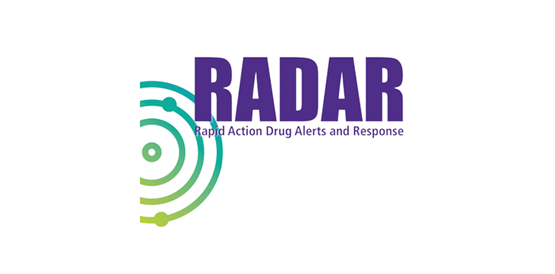Blog: Exploring digital harms and risks
Author: Jason Railton, Digital Inclusion Development Officer at SCVO
When we work with vulnerable communities, it can sometimes be tempting to be risk averse... However, when we explored this with our cohort, we realised that for every fear and concern there was ample mitigations that have proven, through their practice, to work.
When I was learning to drive, my instructor said to me that the only way I can achieve zero risk in a car is to not be in the car.
This wasn’t a direct comment on my driving abilities (I think), but a key point that’s as true about driving as it is about using the internet. Risk and danger exist everywhere: it’s only through providing a robust framework for skills and confidence that we can learn to mitigate it.
This was the theme of our most recent Community of Learning. We wanted to understand what risks and fears looked like not just for the people we support, but for our frontline staff and managers too.
When we work with vulnerable communities, it can sometimes be tempting to be risk averse. This is understandable: individuals who have experienced trauma engage with services promoting harm reduction. It’s therefore within our nature to be nervous about opening people up to new and unexpected risk. However, when we explored this with our cohort, we realised that for every fear and concern there was ample mitigations that have proven, through their practice, to work. We’ve pulled together some of their top tips for managing fear and risk online.
Have the awkward and uncomfortable conversations.
When we think about harms and risks online, we often think about scams and fraud. This is important, but it’s also crucial that users are able to protect themselves from misinformation, sexual exploitation and even radicalisation. It might be awkward to have conversations about this, but our cohort said:
“Be kind, but blunt. Don’t leave conversations open to interpretation. Don’t shame people – work within the context of your service.”
Enhancing the media literacy of our learners is crucial to ensuring they have the capability to protect themselves in the current landscape.
Think about money and your users’ relationship with it.
We know that a fear of scams and fraud can be a major factor preventing people from accessing the internet. While there are lots of ways to support our learners to stay safe online, it was also clear from our cohort that the risks weren’t just garden-variety fraud. The ability to effectively manage money online, risks around online financial behaviours like gambling and general financial literacy were also raised. Access to the internet, naturally, amplifies the risk factors related.
The advice from our cohort varied, but improving education about managing money was consistently raised. Among this, supporting your learner to access advice and help from their bank and even attending the bank appointment with them were options. Some people also discussed encouraging users to get their dopamine hits in different ways, for example using Pinterest rather than spending on Temu.
Embed online safety skills to build trust.
One consistent feedback we have from anyone working in the digital upskilling space is that conversations around online safety often feel overly complex and not very interesting. A lot of digital inclusion practitioners will agree. We know that embedding online safety is the best way to address this, but sometimes we need to be explicit in how we address this – particularly for vulnerable people. Having conversations about passwords and managing location settings can contribute towards users feeling a greater sense of trust and security in the tech we’re supporting them to use.
We also wanted to understand how we can support the people delivering our services when it comes to overcoming potential risks and harms. In a world where danger is ever-present and not always obvious, how can we empower staff and volunteers to feel comfortable promoting digital?
Build understanding about the ‘why’.
Engaging staff in new projects can be hard, regardless of the subject. We often find in digital inclusion that there can be reluctance and resistance to change, or an uncertainty or fear in supporting people online. Our cohort advises that building understanding about why you’re delivering this project is a great way to overcome these barriers.
Helping them to understand that digital is a lifeline, a tool to empower and the difference it can make on your service users is a great way to ensure buy-in across the organisation and reduce the fears of the unknown. Bringing your team with you is important – and our group said that transparency in how devices are allocated and building loss into the programme helps to reduce risk-aversion in delivery.
Implement effective structures and policies.
Some of the conversations that come from this work can be difficult and impact on staff or volunteers. Sometimes they may even witness things that make them uncomfortable. Having the right policies and procedures in place to support your staff and provide the psychological safety to drive the work forward is key.
Our cohort told us that sometimes staff feel accountability is a stressor or risk for them and how they support people – what if a device is sold? What if there’s reputational damage? Going into these projects with this knowledge and the right policies in place, our group said, helped to make everyone feel comfortable. Clear guidelines about eligibility for devices and support help here too.
Work collaboratively and embed as you go.
A fear around not having the skills or confidence was cited as a risk preventing staff from engaging with the programme. Our cohort said that providing staff training, ‘finding the hook’ and re-assuring staff that they didn’t have to be digital experts was key here. By working alongside clients, staff can build their own skills while supporting service users.
Similarly, a lack of capacity and time to introduce digital upskilling or support into day-to-day jobs was a concern. Our group highlighted that finding different ways to embed digital into the support we already offer is key. For example, which part of a client’s journey could have a digital element and how can we help them? Crucially, working collaboratively within our own teams and other people working in this area to find ways to overcome common problems helps too.
What is clear from was that central to all of this is having open, clear conversations with our staff and service users. Addressing people’s concerns about risks and harms comes from understanding their personal experiences – and providing the trust and safety to explore them together.
Other stories

UK invests over £10 million to boost careers in addiction sciences
UK invests over £10 million to boost careers in addiction sciences
Digital Lifelines Scotland Wins Digital Inclusion Award 2025 – Bridging the Digital Divide
Digital Lifelines Scotland Wins Digital Inclusion Award 2025 – Bridging the Digital Divide
